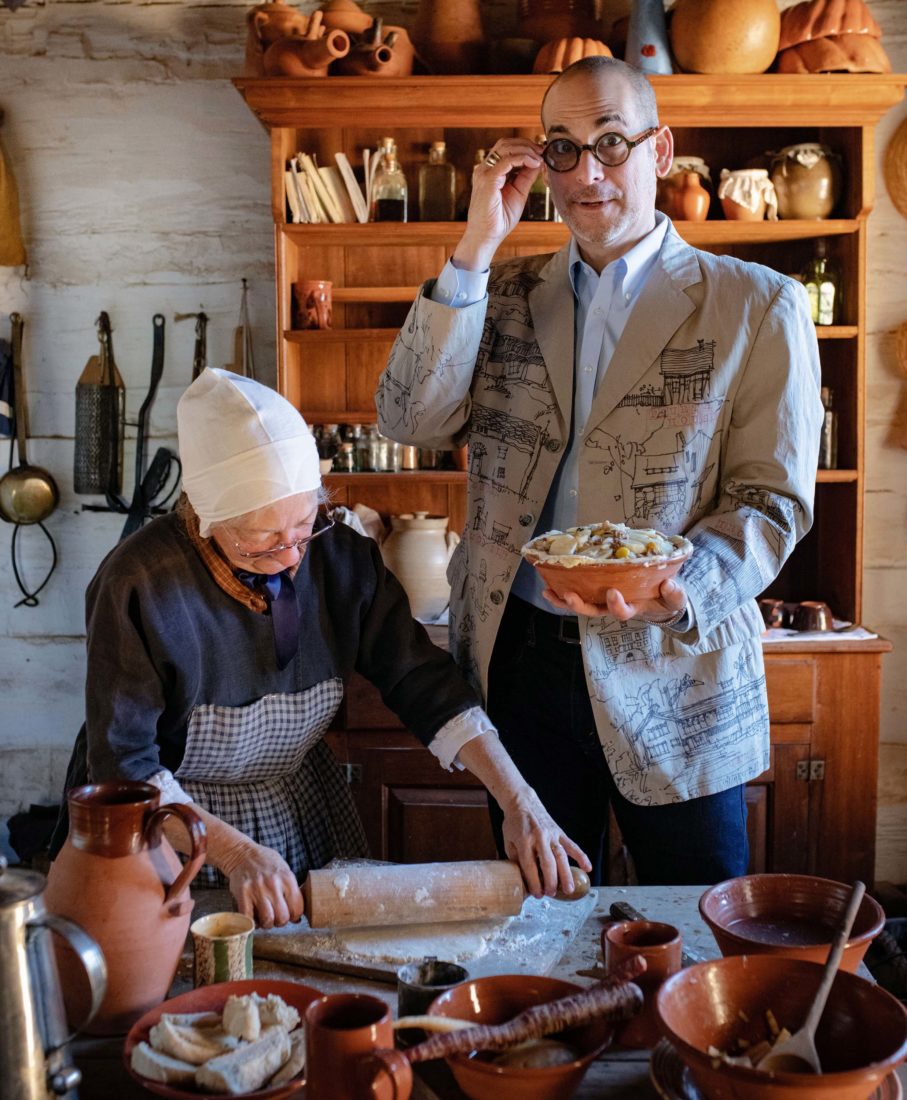When Franklin D. Vagnone coauthored Anarchist’s Guide to Historic House Museums in 2015, he essentially tossed a small bomb into the staid, hands-off world of historic homes. Instead of keeping visitors behind a rope as they peered into a curated tableau, he wanted to invite them in and let them explore and touch and ask uncomfortable questions. Replacing
“look” with “experience” was his way of creating relevance at historic properties, many of which have suffered from declining funding and attendance. “I was frustrated by the inability of these sites to innovate and move outside what is really a 1930s-to-1950s interpretive model,” says Vagnone, who grew up in Charlotte and previously headed historic site groups in Philadelphia and New York City.
In 2016 the board of Winston-Salem, North Carolina’s Old Salem Museums & Gardens, a nonprofit overseeing historic buildings in the tract of land first settled by Moravians in 1753, called to ask him about taking on the job of director. Flattered, he laughed and told them he was too radical, and to read his book, assuming that would end the conversation. “We already have,” they replied, and invited him to use Old Salem as a pilot project to test his bold ideas.
Among his first moves there: launching the Hidden Town Project, to draw attention to the lives of both the enslaved and free African American residents, long overlooked. He took down the ropes and opened rooms to visitors, where they could sit and stitch a quilt or feel the heat of the wood-fired ovens. “It’s thinking of these sites as educational classrooms,” Vagnone says. “I want interpreters to engage our visitors in conversation that can be useful in today’s world.”
The result: Visitation is up, and the feedback has been overwhelmingly positive. “For me, it was a matter of stating the obvious,” Vagnone says. “These sites wouldn’t be here much longer if they didn’t pay attention to what was happening in the world around them.”
MEET MORE SOUTHERN HEROES
Next: Amir Touré, BJ Dennis, and Sallie Ann Robinson| Full list: See all 30 heroes








